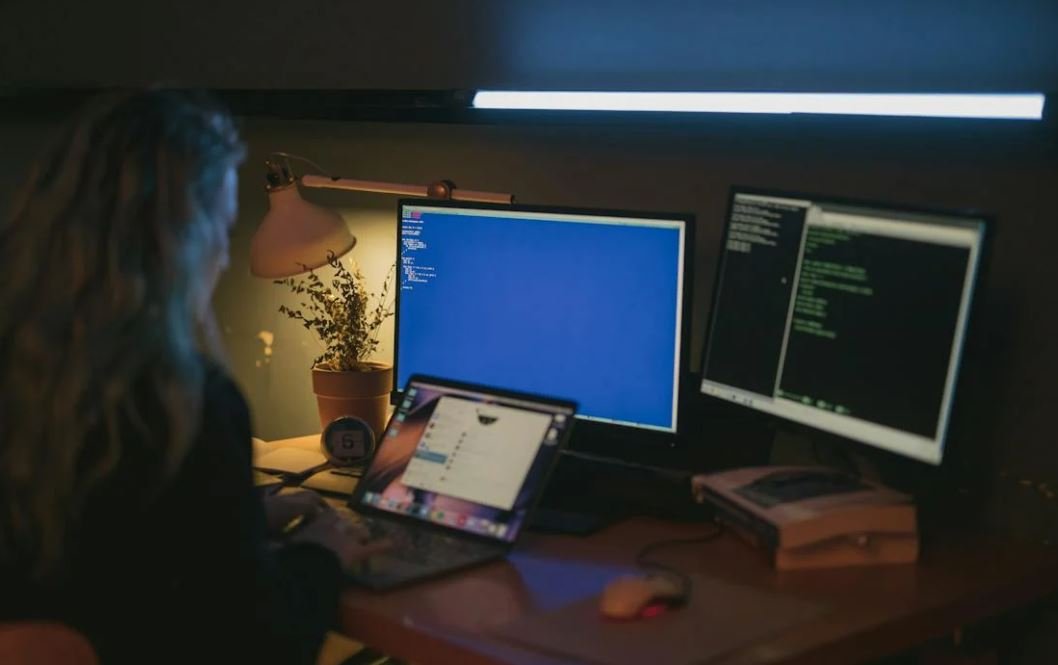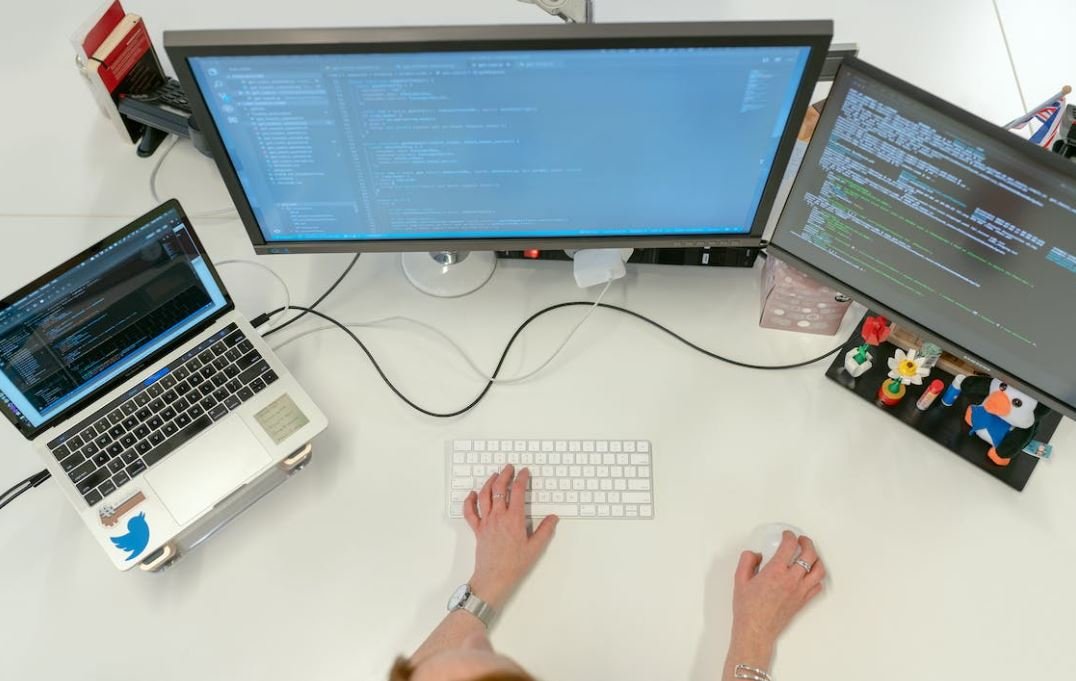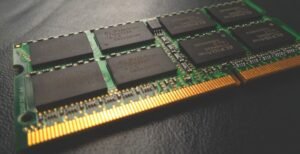Procedural Generative Audio
Procedural generative audio is an innovative approach to creating dynamic and immersive soundscapes using algorithms and mathematical models. Unlike traditional audio production, which heavily relies on pre-recorded sounds and samples, procedural generative audio generates unique audio content in real-time, allowing for endless variations and adaptability.
Key Takeaways
- Procedural generative audio uses algorithms and mathematical models to create dynamic and immersive soundscapes.
- Unlike traditional audio production, it generates unique audio content in real-time.
- Procedural generative audio offers endless variations and adaptability.
Using computational techniques, procedural generative audio can generate sound effects, music, and even entire soundtracks for various applications such as video games, virtual and augmented reality experiences, films, and installations. By defining rules and parameters, the algorithm can generate audio that responds to changing conditions or user interactions, resulting in truly interactive and responsive audio experiences.
Procedural generative audio allows for the creation of interactive and responsive audio experiences.
Advantages of Procedural Generative Audio
- Endless variations: Procedural generative audio provides an unlimited number of audio possibilities, ensuring unique experiences for each user.
- Adaptability: The real-time generation of audio allows it to adapt to changing conditions, creating a more immersive and personalized experience.
- Efficiency: Procedural generative audio reduces the need for extensive audio libraries and pre-recorded assets, saving storage space and streamlining the production process.
Procedural generative audio often relies on modular synthesis techniques, where different sound modules can be combined and manipulated using algorithms to generate audio. These modules can represent various sound sources or audio processing elements, such as oscillators, filters, and effects. By connecting and configuring these modules, complex and intricate soundscapes can be created.
Modular synthesis techniques enable the creation of complex and intricate soundscapes.
The Process of Procedural Generative Audio
Procedural generative audio follows a general process that involves defining the parameters and rules, generating the audio content using algorithms, and controlling the output in real-time. The following steps outline the typical process:
- Defining parameters: Specify the desired characteristics, such as pitch range, tempo, or intensity, that will influence the audio generation.
- Implementing algorithms: Develop or use existing algorithms that produce the audio content based on the defined parameters. These algorithms may involve randomization, fractal math, or other mathematical models to achieve desired audio results.
- Real-time control: Utilize user input, sensor data, or other input sources to influence the generated audio in real-time, allowing for interactive and responsive experiences.
Applications of Procedural Generative Audio
| Application | Example Use Case |
|---|---|
| Video Games | Dynamic sound effects and adaptive music that respond to in-game events and player actions. |
| Virtual Reality | Immersive audio landscapes that react to the user’s movements and interactions within the virtual environment. |
Procedural generative audio finds extensive application in video games, where it can dynamically generate sound effects and adaptive music that respond to in-game events and player actions. This enhances the overall immersive experience and creates a sense of realism. Similarly, in virtual reality environments, procedural generative audio can create interactive and responsive audio landscapes that react to the user’s movements and interactions within the virtual environment, further enhancing immersion.
| Application | Example Use Case |
|---|---|
| Films and Installations | Creating unique soundscapes and atmospheres to complement visual storytelling and installations. |
| Music Production | Generating experimental and avant-garde compositions that challenge traditional music production techniques. |
Procedural generative audio also finds its place in the fields of film and installations, where it can create unique soundscapes and atmospheres to complement visual storytelling and immersive experiences. In music production, artists and composers leverage procedural generative audio to generate experimental and avant-garde compositions that challenge traditional music production techniques, pushing the boundaries of creativity and innovation.
Challenges and Future Directions
Although procedural generative audio offers exciting possibilities, it also presents challenges that need to be addressed:
- Generating coherent and aesthetically pleasing audio is a complex task that requires expertise in both audio programming and music theory.
- Creating efficient algorithms that can produce high-quality audio in real-time can be computationally demanding.
- The need for machine learning techniques to improve the generative capabilities and adaptability of procedural generative audio systems.
Conclusion
Procedural generative audio is revolutionizing the way we approach audio production by providing endless variations, adaptability, and interactive experiences. From video games and virtual reality to films and music production, this innovative technique unlocks new creative possibilities while challenging traditional production methods. As advancements in technology and algorithm design continue, the future of procedural generative audio looks promising, enabling even more immersive and personalized audio experiences.

Common Misconceptions
Misconception 1: Procedural Generative Audio is just random noises
One common misconception about procedural generative audio is that it is just random noises generated by a computer. However, this is not true. Procedural audio is carefully designed and structured to create specific experiences or soundscapes. It involves algorithms and rules to generate sounds dynamically based on parameters.
- Procedural generative audio considers various factors such as pitch, tone, rhythm, and timbre
- It allows for the creation of intricate, evolving sound compositions
- Procedural generative audio can be used in video games, virtual reality, or even relaxation apps
Misconception 2: Procedural Generative Audio lacks human creativity
Another misconception is that procedural generative audio lacks human creativity since it is algorithmically generated. However, this is not the case. While the initial rules and algorithms are set by humans, they serve as a foundation for exploration and experimentation. Artists and designers still have control and can shape the resulting audio through the creation and manipulation of procedural systems.
- Procedural generative audio is a tool that augments human creativity
- Artists can inject their artistic vision into the creation process
- Procedural systems can be responsive to user input, creating unique experiences
Misconception 3: Procedural Generative Audio is limited in its possibilities
Some people believe that procedural generative audio is limited in terms of the range of sounds it can produce. However, procedural systems can be highly versatile and capable of generating a wide variety of sounds and compositions. With the right algorithms, the audio can range from natural and realistic to abstract and experimental.
- Procedural audio can create realistic environmental sounds like rain, wind, or animal calls
- It can produce complex, intricate musical compositions
- Procedural systems can generate unique sound effects for media production
Misconception 4: Procedural Generative Audio is difficult to implement
There is a misconception that procedural generative audio is complex and requires advanced programming skills to implement. While advanced knowledge in programming and audio processing can enhance the possibilities, there are also user-friendly tools and software available that allow artists and designers with different skill levels to create their own procedural audio compositions without extensive programming knowledge.
- Various visual scripting interfaces simplify the process of creating procedural audio
- Libraries and frameworks provide pre-built components for procedural audio generation
- Online communities and tutorials offer support for beginners in procedural audio creation
Misconception 5: Procedural Generative Audio lacks emotional depth
Some people mistakenly believe that procedural generative audio is devoid of emotional depth and cannot elicit the same emotional responses as traditional, composed music. However, with careful design and understanding of musical theory, procedural generative audio can evoke a wide range of emotions and create immersive and expressive experiences for the listeners.
- Procedural audio can use musical techniques like chord progressions and dynamics to convey emotions
- By incorporating randomness and unpredictability, it can surprise and engage the listeners
- With interactive elements, procedural generative audio can respond to user actions, enhancing emotional engagement

Introduction
Procedural generative audio is a fascinating concept that utilizes algorithms to create unique and immersive soundscapes. This innovative approach to audio production involves mathematical and logical operations to craft sound elements programmatically. In this article, we explore various aspects and applications of procedural generative audio through ten intriguing examples.
Evolving Melodies
Through the use of evolving algorithms, procedural generative audio can generate captivating melodies that change over time. By defining specific rules and patterns, these algorithms can create melodies that evolve gradually, resulting in dynamic and unpredictable compositions.
Randomized Rhythms
Procedural generative audio allows for the creation of complex and intricate rhythms by introducing randomness into the pattern generation process. By incorporating random elements, such as variations in note duration and accent placement, unique rhythmic patterns can be generated for a mesmerizing listening experience.
Algorithmic Harmony
With procedural generative audio, algorithms can be developed to generate harmonies automatically. By applying rules of music theory, such as chord progressions and voice leading techniques, these algorithms produce harmonically rich compositions that follow established musical principles.
Spatial Audio
Procedural generative audio can be utilized to create immersive soundscapes in virtual and augmented reality environments. By leveraging algorithms that simulate realistic sound propagation and spatial positioning, users can experience a three-dimensional audio experience that enhances the overall immersion of the virtual world.
Environmental Sound Design
Through procedural generative audio, designers can create realistic and dynamic soundscapes for various virtual environments, such as forests, cities, or outer space. By parameterizing different audio elements, such as wind, bird chirps, or traffic noise, algorithms can generate soundscapes that accurately represent different environments.
Musical Instrument Simulation
Procedural generative audio can be employed to simulate the sounds of various musical instruments. By analyzing the characteristics and mechanics of an instrument, algorithms can produce realistic sounds that mimic specific instruments, providing versatile and customizable options for music production.
Foley Sound Generation
Procedural generative audio can facilitate the automatic generation of foley sounds for multimedia production. By mapping physical movements or scenarios to sound parameters, algorithms can dynamically generate sound effects that match different actions, enhancing the overall realism and immersion of multimedia experiences.
Adaptive Audio Systems
Through procedural generative audio, adaptive audio systems can be created that respond to user input or specific events in real-time. These systems allow for the generation and manipulation of audio elements based on the user’s actions or contextual information, resulting in interactive and responsive audio experiences.
Generative Soundscapes
Procedural generative audio enables the creation of ambient and atmospheric soundscapes that can be used for various applications, such as meditation, relaxation, or game environments. By combining algorithmic composition techniques with sound design principles, unique and evocative soundscapes can be generated.
Conclusion
Procedural generative audio opens up a vast realm of possibilities in the creation of audio content. By harnessing the power of algorithms and mathematical operations, this innovative approach offers endless opportunities for unique and immersive sound experiences. Whether it’s composing evolving melodies, simulating musical instruments, or generating realistic soundscapes, procedural generative audio continues to push the boundaries of audio production, inspiring creativity and innovation in the field.
Frequently Asked Questions
What is procedural generative audio?
Procedural generative audio refers to the use of algorithms and mathematical functions to generate dynamic and unique audio content in real-time. It involves creating music or soundscapes that are not fixed compositions, but rather generated based on predefined rules and parameters.
How does procedural generative audio work?
Procedural generative audio works by programming algorithms that define the behavior, structure, and patterns of the sound. These algorithms can control various elements such as pitch, rhythm, timbre, and spatialization. The parameters and rules within the algorithms can be adjusted to create different variations of the audio output.
What are the advantages of using procedural generative audio?
Using procedural generative audio offers several advantages, including:
- Endless variety: Procedural generative audio can generate an infinite number of unique compositions or soundscapes.
- Adaptability: The system can respond and adapt to different inputs or environments.
- Efficiency: Once the algorithm is programmed, it can generate audio on the fly without the need for pre-recorded samples.
- Creativity: Procedural generative audio encourages exploration and experimentation, allowing for the creation of novel and unconventional sound experiences.
What are some applications of procedural generative audio?
Procedural generative audio finds application in various fields, including:
- Video games: It can create dynamic and immersive soundtracks that adapt to the gameplay.
- Interactive media: Procedural audio enhances user experiences in virtual reality environments or interactive installations.
- Film and television: It can be used to generate unique sound effects or ambient backgrounds in movies and shows.
- Music composition: Procedural generative audio can inspire musicians to explore new sonic territories and aid in the composition process.
What programming languages are commonly used for procedural generative audio?
There are several programming languages commonly used for procedural generative audio, such as:
- Max/MSP: A visual programming language widely used in audio and multimedia applications.
- SuperCollider: A language specifically designed for real-time audio synthesis and composition.
- Pure Data: A graphical programming language similar to Max/MSP, used for multimedia and real-time interaction.
- Csound: A programming language for sound synthesis and algorithmic composition.
Is it possible to combine procedural generative audio with traditional music composition?
Absolutely! Procedural generative audio can be used in conjunction with traditional music composition techniques to create hybrid compositions. The generative elements can be integrated into composed sections, or the generative system itself can work as a compositional tool, generating material that can be further developed by the composer.
Can procedural generative audio be controlled and influenced by external factors?
Yes, procedural generative audio systems can be designed to be influenced by external factors such as user input, sensor data, or network information. This allows for interactive and responsive audio experiences that can adapt to different contexts or user actions.
Are there any copyright issues with using procedural generative audio?
The use of procedural generative audio does not inherently create copyright issues. However, if you use copyrighted materials within your generative system, such as pre-recorded samples or copyrighted algorithms, you must respect the appropriate licenses and usage rights.
Where can I find resources to learn more about procedural generative audio?
There are various online resources, tutorials, and communities dedicated to procedural generative audio. Some recommended starting points include:
- Online forums and communities focused on audio programming and generative music.
- Books and publications on algorithmic composition and sound synthesis.
- Online courses and tutorials, often available on platforms like YouTube or dedicated educational websites.
- Participating in workshops or conferences related to procedural generative audio.




